
The Polo Grounds was the name of three stadiums in Upper Manhattan, New York City, used mainly for professional baseball and American football from 1880 through 1963. The original Polo Grounds, opened in 1876 and demolished in 1889, was built for the sport of polo. Bound on the south and north by 110th and 112th streets and on the east and west by Fifth and Sixth (Lenox) avenues, just north of Central Park, it was converted to a baseball stadium when leased by the New York Metropolitans in 1880.
The American Association of Base Ball Clubs (AA) was a professional baseball league that existed for 10 seasons from 1882 to 1891. Together with the National League (NL), founded in 1876, the AA participated in an early version of the World Series seven times versus the champion of the NL in an interleague championship playoff tournament. At the end of its run, several AA franchises joined the NL. After 1891, the NL existed alone, with each season's champions being awarded the Temple Cup (1894–1897).
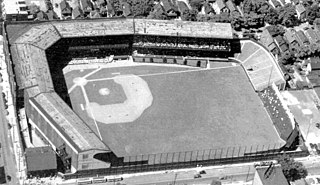
League Park was a baseball park located in Cleveland, Ohio, United States. It was situated at the northeast corner of Dunham Street and Lexington Avenue in the Hough neighborhood. It was built in 1891 as a wood structure and rebuilt using concrete and steel in 1910. The park was home to a number of professional sports teams, most notably the Cleveland Indians of Major League Baseball. League Park was first home to the Cleveland Spiders of the National League from 1891 to 1899 and of the Cleveland Lake Shores of the Western League, the minor league predecessor to the Indians, in 1900. From 1914 to 1915, League Park also hosted the Cleveland Spiders of the minor league American Association. In the late 1940s, the park was also the home field of the Cleveland Buckeyes of the Negro American League.

National League Park, commonly referred to as the Baker Bowl after 1923, was a baseball stadium and home to the Philadelphia Phillies from 1887 until 1938, and first home field of the Philadelphia Eagles from 1933 to 1935. It opened in 1887 with a capacity of 12,500, burned down in 1894, and was rebuilt in 1895 as the first ballpark constructed primarily of steel and brick, and first with a cantilevered upper deck. The ballpark's first base line ran parallel to Huntingdon Street; right field to center field parallel to North Broad Street; center field to left field parallel to Lehigh Avenue; and the third base line parallel to 15th Street. The stadium was demolished in 1950.
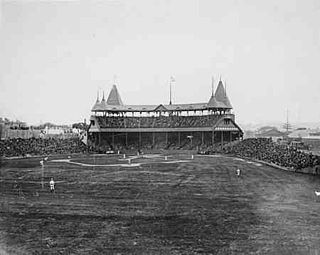
South End Grounds refers to any one of three baseball parks on one site in Boston, Massachusetts. They were home to the franchise that eventually became known as the Boston Braves, first in the National Association and later in the National League, from 1871 to 1914.
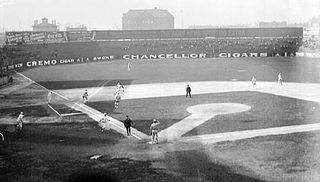
South Side Park was the name used for three different baseball parks that formerly stood in Chicago, Illinois, at different times, and whose sites were all just a few blocks away from each other.
Boundary Field, also known as American League Park II and National Park, is a former baseball ground in Washington, D.C. located on the site currently occupied by Howard University Hospital; bounded approximately by Georgia Avenue, 5th Street, W Street and Florida Avenue, NW. It was just outside what was then the city limit of Washington, whose northern boundary was Boundary Street which was renamed Florida Avenue in 1890.
Jefferson Street Grounds was a baseball field located in Philadelphia, Pennsylvania. It was also known as Jefferson Park and Athletics Park. It was home to three different professional baseball teams, competing in three different leagues. Notably, it was the venue for the first game in National League history, played on April 22, 1876.
The Bank Street Grounds is a former baseball park located in Cincinnati. The park was home to three major league baseball teams. The National League Cincinnati Stars club in 1880, the current Cincinnati Reds franchise from 1882 to 1883 and the Cincinnati Outlaw Reds of the Union Association in 1884. It succeeded the Avenue Grounds as the home site for professional ball in the Queen City.
Union Base-Ball Grounds was a baseball park located in Chicago. The park was "very visibly downtown", its small block bounded on the west by Michigan Avenue, on the north by Randolph Street, and on the east by railroad tracks and the lake shore, which was then much closer than it is today. The site is now part of Millennium Park.

The Boston Reds were a 19th-century baseball team located in Boston, Massachusetts that played in the Players' League in 1890 and in the American Association in 1891. They played in the Congress Street Grounds in the 1890s. The team took its name from the successful Boston club of the National Association and National League often known as the (Boston) Red Stockings. The club lasted only two seasons, but in those two seasons they were league champions.
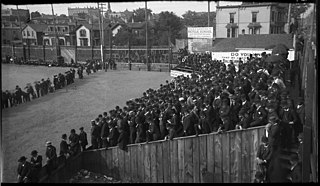
Athletic Park was the home of the Minneapolis Millers baseball team from 1889 to mid-season 1896. The park was located behind the West Hotel at 6th St and 1st Ave North in Minneapolis near where Target Center and Target Field are today.

Exposition Park is a former baseball ground located in Kansas City, Missouri, USA. The ground was home to the Kansas City Cowboys of the American Association for the 1888 and 1889 seasons.
The Kekiongas have a splendid ground for playing upon this year. They have six acres enclosed with a high, tight board fence, measuring 1,900 feet lineal, and seats for the convenience of spectators, with canopy overhead.
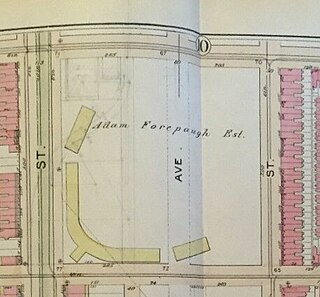
Forepaugh Park was a baseball ground located in Philadelphia, Pennsylvania, at Broad and Dauphin Streets in North Philadelphia. It had an estimated capacity of 5,000. The ground was home to the Philadelphia Quakers of the Players' League in 1890 and the American Association in 1891. The ballpark featured a bicycle track and was a popular velodrome in Philadelphia in the early 1890s. The ballpark was owned by and named for Adam Forepaugh and the grounds used for circuses and various types of exhibitions until 1894. The property was sold for development and residences constructed in 1895.

International Fair Association Grounds was a fairgrounds and later a short-lived baseball and football ground located in Buffalo, New York. The ballpark, built on a portion of the former fairgrounds, was home to the Buffalo Buffeds/Blues of the Federal League in 1914 and 1915.

The Boston Reds were a Major League Baseball franchise that played in the Players' League (PL) in 1890, and one season in the American Association (AA) in 1891. In both seasons, the Reds were their league's champion, making them the second team to win back-to-back championships in two different leagues. The first franchise to accomplish this feat was the Brooklyn Bridegrooms, who won the AA championship in 1889 and the National League (NL) championship in 1890. The Reds played their home games at the Congress Street Grounds.

East End Park was a former major league baseball park located in the East End neighborhood of Cincinnati in the United States. The ballpark, which is also known to baseball historians as Pendleton Park, was home to the Cincinnati Reds of the American Association during the 1891 baseball season. The club was led by the flamboyant star, Mike "King" Kelly.

Oriole Park was the name of multiple baseball parks in Baltimore, Maryland, all built within a few blocks of each other.

















